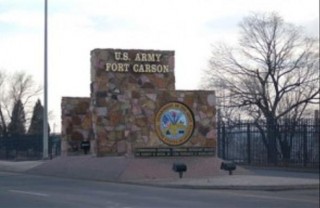 This article was sent to VT by Paul Sullivan, and our friends over at Veterans for Common Sense (VCS).
This article was sent to VT by Paul Sullivan, and our friends over at Veterans for Common Sense (VCS).
The story reflects that despite efforts of the Air Force and Army to embrace and accept the problems associated with multiple deployments and Mental Health to include looking at innovative treatments, the Army continues to face a Mental Health Crisis at some bases.
Robert L. Hanafin, Major, U.S. Air Force-Retired, VT News
Fort Carson Mental Health Crisis: 1,000 New Patients
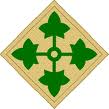
Post-Deployment Needs of 4th Infantry Rise Sharply
May 24, 2010 – According to Army Times, nearly 1,000 soldiers from the 4th Infantry Division’s 4th Brigade Combat Team have been identified as needing special counseling when they get home from their yearlong tour in Afghanistan, Fort Carson officials said.
The impact will be so significant that the Warrior Transition Unit (WTU) at Fort Carson, Colo., may have to expand – just to accommodate the 4-4th combat veterans.
VT Editorial Comment: Recall the problems that Army Surgeon General Schoomaker noted with WTU and how some Oregon National Guard troops felt like they were being treated literally like Weekend Warriors.
It was a difficult deployment for the 4-4th, which suffered among the heaviest cas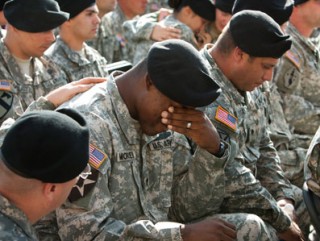 ualties since the start of the war. Thirty-nine soldiers were killed and nearly 500 wounded during 12 months in Afghanistan. The now-infamous Combat Outpost Keating battle in October 2009 took eight 4-4th soldiers and left 24 wounded.
ualties since the start of the war. Thirty-nine soldiers were killed and nearly 500 wounded during 12 months in Afghanistan. The now-infamous Combat Outpost Keating battle in October 2009 took eight 4-4th soldiers and left 24 wounded.
Given the rough deployment, medical professionals did one-onone screenings with every soldier in the brigade before they left the war zone. Based upon their answers – and input from commanders – soldiers were classified as red, green or amber, based upon officials’ concerns about their ability to transition back to society after such a difficult deployment.
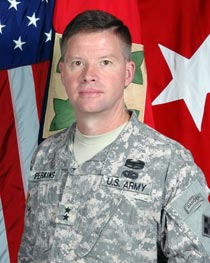 The Enhanced Medical Exam of the 3,800 soldiers in the 4-4th rated 21 soldiers “red,” 917 “amber” and the rest “green.” “Red” soldiers are identified as needing immediate help; “amber” soldiers are considered to be susceptible to behavioral health problems, while “green” soldiers are those who seemed less scarred by the deployment. The designation determines what happens when they get home. “The red ones will be met at the ramp,” said Maj. Gen. David G. Perkins, commander of the 4th Infantry Division. They will be met by licensed behavioral health providers – psychologists, psychiatrists and clinical social workers to determine if they need special immediate treatment.
The Enhanced Medical Exam of the 3,800 soldiers in the 4-4th rated 21 soldiers “red,” 917 “amber” and the rest “green.” “Red” soldiers are identified as needing immediate help; “amber” soldiers are considered to be susceptible to behavioral health problems, while “green” soldiers are those who seemed less scarred by the deployment. The designation determines what happens when they get home. “The red ones will be met at the ramp,” said Maj. Gen. David G. Perkins, commander of the 4th Infantry Division. They will be met by licensed behavioral health providers – psychologists, psychiatrists and clinical social workers to determine if they need special immediate treatment.
The amber ones are assigned to the Soldier Readiness Center Behavioral Health Section for further evaluation.
The WTU today has four companies, housing 485 soldiers assigned there. To accommodate the returning 4th BCT, the WTU may add a fifth company to handle an expected 100 soldiers from the 4-4th.
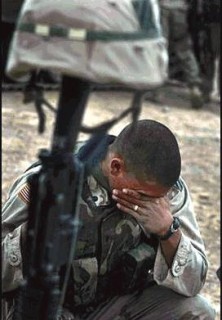 The soldiers of the 4-4th will get more screening after they arrive home this month. Each of them will be re-interviewed before they go on block leave – a month long break after redeployment. And when they return from leave, they will again be screened because Army medical experts have found that soldiers develop problems during “transition” periods, such as re-deployments, changes of station and transfers.
The soldiers of the 4-4th will get more screening after they arrive home this month. Each of them will be re-interviewed before they go on block leave – a month long break after redeployment. And when they return from leave, they will again be screened because Army medical experts have found that soldiers develop problems during “transition” periods, such as re-deployments, changes of station and transfers.
Over the next few years, the Army plans to spend $1.2 billion to build WTU “campuses” at 20 military bases. Each campus will be built close to a military hospital and will include a barracks, a family resource center and other facilities geared toward the recuperating soldier.
The first facility built from the ground up will open soon at Fort Riley, Kan.
http://www.veteransforcommonsense.org/index.php/national-security/1727-staff-reports
Readers are more than welcome to use the articles I’ve posted on Veterans Today, I’ve had to take a break from VT as Veterans Issues and Peace Activism Editor and staff writer due to personal medical reasons in our military family that take away too much time needed to properly express future stories or respond to readers in a timely manner.
My association with VT since its founding in 2004 has been a very rewarding experience for me.
Retired from both the Air Force and Civil Service. Went in the regular Army at 17 during Vietnam (1968), stayed in the Army Reserve to complete my eight year commitment in 1976. Served in Air Defense Artillery, and a Mechanized Infantry Division (4MID) at Fort Carson, Co. Used the GI Bill to go to college, worked full time at the VA, and non-scholarship Air Force 2-Year ROTC program for prior service military. Commissioned in the Air Force in 1977. Served as a Military Intelligence Officer from 1977 to 1994. Upon retirement I entered retail drugstore management training with Safeway Drugs Stores in California. Retail Sales Management was not my cup of tea, so I applied my former U.S. Civil Service status with the VA to get my foot in the door at the Justice Department, and later Department of the Navy retiring with disability from the Civil Service in 2000.
I’ve been with Veterans Today since the site originated. I’m now on the Editorial Board. I was also on the Editorial Board of Our Troops News Ladder another progressive leaning Veterans and Military Family news clearing house.
I remain married for over 45 years. I am both a Vietnam Era and Gulf War Veteran. I served on Okinawa and Fort Carson, Colorado during Vietnam and in the Office of the Air Force Inspector General at Norton AFB, CA during Desert Storm. I retired from the Air Force in 1994 having worked on the Air Staff and Defense Intelligence Agency at the Pentagon.
ATTENTION READERS
We See The World From All Sides and Want YOU To Be Fully InformedIn fact, intentional disinformation is a disgraceful scourge in media today. So to assuage any possible errant incorrect information posted herein, we strongly encourage you to seek corroboration from other non-VT sources before forming an educated opinion.
About VT - Policies & Disclosures - Comment Policy



